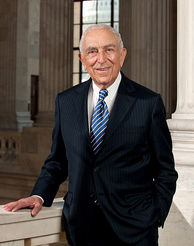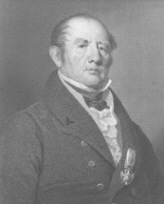How Long Will New Jersey’s US Senate Seat Remain Vacant?
New Jersey has endured 27 vacancies throughout history totaling more than three years; four vacancies have lasted more than 100 days

Republican Governor Chris Christie said he would not appoint a successor until sometime after the funeral services, which will be held on Wednesday.
Much has been written about the political ramifications of Christie’s pick – and how that pick could impact his popularity in his home state in the short term and among the national Republican base should he seek the presidency in 2016.
Although the decision may be one Christie weighs carefully, it is unlikely to take as long for New Jersey to get a new Senator seated as it has during many vacancies in its past.
A Smart Politics review of U.S. Senate records finds that New Jersey has had more than two dozen vacancies totaling more than three years collectively in which the state was represented by only one individual in the nation’s upper legislative chamber.
A total of 64 different individuals have served in the U.S. Senate from New Jersey since statehood, and during 27 different periods – ranging from a few days to more than six months – the state has had only one Senator in the chamber.
Three Senate vacancies have occurred in the 1700s, 15 in the 1800s, eight in the 1900s, and now one in the 2000s.
Senate vacancies have arisen in New Jersey history for a variety of reasons over the decades including eight deaths, disputed elections, and resignations to take other positions in government as well as due to scandal.
The total length of these vacancies can be examined in two ways:
1) The duration before a new Senator is appointed or elected.
2) The duration before a new Senator is actually seated.
According to Senate rules, senators-elect “Take their oath of office from the presiding officer in an open session of the Senate before they can begin to perform their legislative activities.”
For example, in earlier times, an individual may get appointed to the Senate by the Governor of New Jersey after a vacancy period of, say, 30 days, but is unable to take the oath and get seated for 45 days.
The amount of time between being appointed and seated is much shorter these days.
During the last vacancy in New Jersey after the resignation of Democrat Harrison Williams coming out of the ABSCAM scandal, Republican Nicholas Brady was appointed and sworn in on the same day – 40 days after Williams left office.
Overall, the total time in which New Jersey has had only one Senator is 1,224 days through Wednesday (and counting), or 3 years, 4 months, and 7 days.
But the total time only one Senator has been seated in the Garden State is 1,629 days (and counting), or 4 years, 5 months, and 17 days.
Four of these New Jersey Senate vacancies have lasted more than 100 days:

However, the New Jersey legislature failed to elect a new Senator and the state was without its full representation in the chamber until the appointment of Jeffersonian Republican John Condit on September 1, 1803, or a period of 181 days.
Condit was not seated until October 17, 1803, for an effective vacancy of 227 days.
That stretch pales to the vacancy New Jersey experienced two decades later.
On March 3, 1823, Jeffersonian-Republican Samuel Southard resigned to become Secretary of the Navy in the cabinet of James Monroe.
The seat remained vacant until the election of Adams-Clay Republican Joseph McIlvaine 254 days later on November 12, 1823.
McIlvaine was not seated until December 1st of that year, or 273 days after Southard’s resignation.
Shortly after the Civil War New Jersey endured another long vacancy.
Democrat John Stockton had served slightly more than a year when, in March 1866, his election to the Senate was called into dispute.
As a result, on March 27th of that year his seat was declared vacant.
The seat would remain unoccupied for the next 176 days when Republican Alexander Cattell was elected on September 19, 1866, although he would not be seated until December 3, 1866 (251 days).
(Note: Stockton would later be elected without controversy and served again from 1869-1875).
Turning the pages of history to the 20th Century finds another long vacancy.
In the Election of 1936 Republican incumbent Senator William Barbour was defeated by 10 points by William Smathers during the Democratic landslide and left office at the end of his term on January 3, 1937.
However, Smathers did not qualify until more than three months later and was sworn in on April 15, 1937, for a 102-day period in which the state had only half of its allotted representation in the Senate.
Of course, it has not always taken so long for New Jersey to fill its vacant Senate seats.
On average, Senators have been appointed or elected within 47 days and have been seated within 63 days.
Periods in Which New Jersey Represented by One U.S. Senator, 1789-Present
|
Outgoing
|
Vacant
|
Appointed/Elected
|
Seated
|
Days 1
|
Days 2
|
|
William Paterson
|
Nov. 13, 1790
|
Nov. 23, 1790
|
Dec. 6, 1790
|
10
|
23
|
|
Frederick Frelinghuysen
|
Nov. 12, 1796
|
Nov. 12, 1796
|
Dec. 6, 1796
|
0
|
24
|
|
John Rutherfurd
|
Nov. 26, 1798
|
Dec. 5, 1798
|
Dec. 19, 1798
|
9
|
23
|
|
James Schureman
|
Feb. 16, 1801
|
Feb. 28, 1801
|
Mar. 3, 1801
|
12
|
15
|
|
Aaron Ogden
|
Mar. 4, 1803
|
Sept. 1, 1803
|
Oct. 17, 1803
|
181
|
227
|
|
Aaron Kitchell
|
Mar. 12, 1809
|
Mar. 21, 1809
|
May 24, 1809
|
9
|
73
|
|
James Wilson
|
Jan. 8, 1821
|
Jan. 26, 1821
|
Feb. 16, 1821
|
18
|
39
|
|
Samuel Southard
|
Mar. 3, 1823
|
Nov. 12, 1823
|
Dec. 1, 1823
|
254
|
273
|
|
Joseph McIlvaine
|
Aug. 19, 1826
|
Nov. 9, 1826
|
Dec. 7, 1826
|
82
|
110
|
|
Ephraim Bateman
|
Jan. 12, 1829
|
Jan. 30, 1829
|
Feb. 9, 1829
|
18
|
28
|
|
Mahlon Dickerson
|
Jan. 30, 1829
|
Mar. 4, 1829
|
Mar. 4, 1829
|
33
|
33
|
|
Samuel Southard
|
Jun. 26, 1842
|
Jul. 2, 1842
|
Jul. 6, 1842
|
6
|
10
|
|
Robert Stockton
|
Jan. 10, 1853
|
Mar. 4, 1853
|
Mar. 4, 1853
|
53
|
53
|
|
John Thompson
|
Sept. 12, 1862
|
Nov. 21, 1862
|
Dec. 1, 1862
|
70
|
80
|
|
Richard Field
|
Jan. 14, 1863
|
Jan. 14, 1863
|
Jan. 21, 1863
|
0
|
7
|
|
John Ten Eyck
|
Mar. 3, 1865
|
Mar. 15, 1865
|
Mar. 15, 1865
|
12
|
12
|
|
John Stockton
|
Mar. 27, 1866
|
Sept. 19, 1866
|
Dec. 3, 1866
|
176
|
251
|
|
William Wright
|
Nov. 1, 1866
|
Nov. 12, 1866
|
Dec. 3, 1866
|
11
|
32
|
|
William Sewell
|
Dec. 27, 1901
|
Jan. 29, 1902
|
Feb. 4, 1902
|
33
|
39
|
|
William Hughes
|
Jan. 30, 1918
|
Feb. 23, 1918
|
Mar. 7, 1918
|
24
|
36
|
|
Walter Edge
|
Nov. 21, 1929
|
Nov. 30, 1929
|
Dec. 9, 1929
|
9
|
18
|
|
Dwight Morrow
|
Oct. 5, 1931
|
Dec. 1, 1931
|
Dec. 8, 1931
|
57
|
64
|
|
William Barbour
|
Jan. 3, 1937
|
Apr. 15, 1937
|
Apr. 15, 1937
|
102
|
102
|
|
A. Harry Moore
|
Jan. 18, 1938
|
Jan. 18, 1938
|
Jan. 24, 1938
|
0
|
6
|
|
William Barbour
|
Nov. 22, 1943
|
Nov. 26, 1943
|
Dec. 2, 1943
|
4
|
10
|
|
Harrison Williams
|
Mar. 11, 1982
|
Apr. 20, 1982
|
Apr. 20, 1982
|
40
|
40
|
|
Frank Lautenberg
|
Jun. 3, 2013
|
N/A
|
N/A
|
1*
|
1*
|
|
|
|
|
Total
|
1,224
|
1,629
|
* Through June 4, 2013. Table compiled by Smart Politics through information provided in the Biographical Directory of the United States Congress.
Follow Smart Politics on Twitter.
